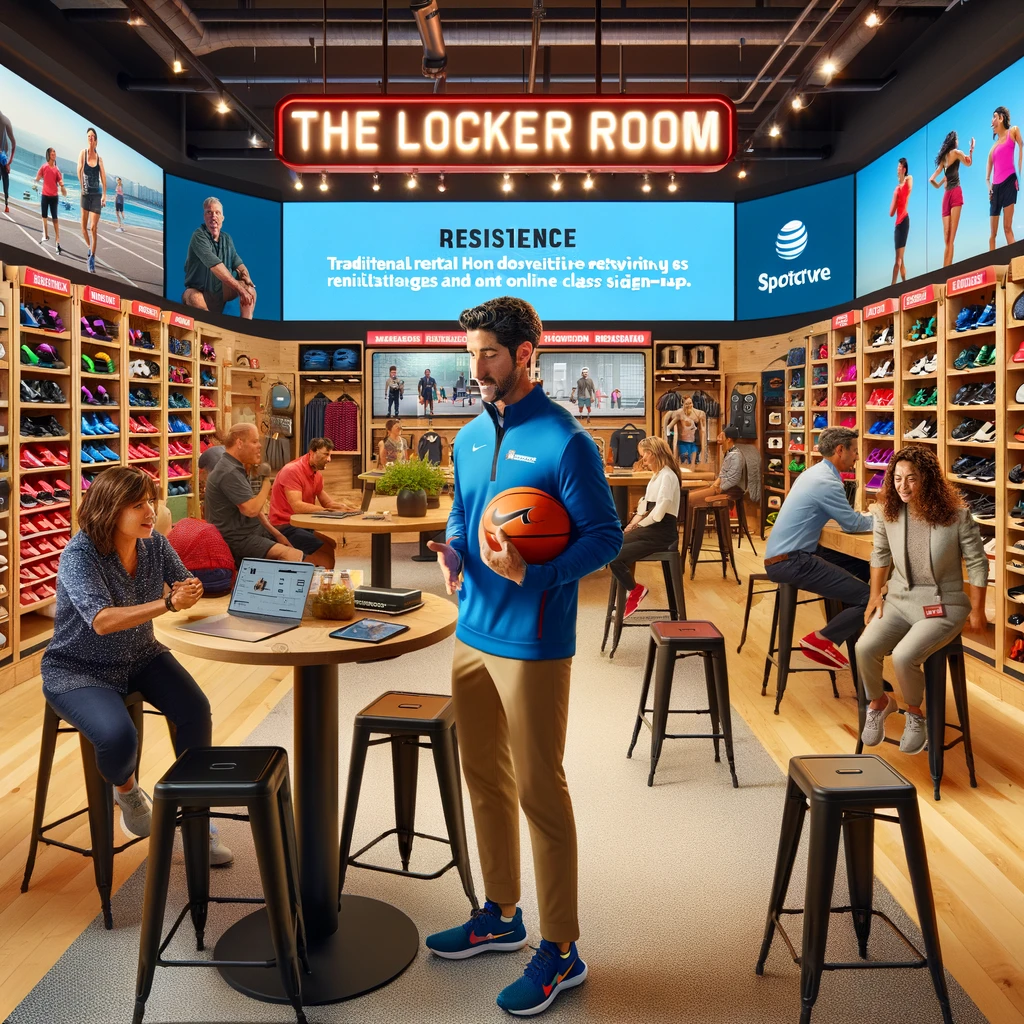
The Road and other Blogging Adventures

Steering Through the Storm: Kevin's Playbook for Crafting a Resilient Business
Steering Through the Storm: Kevin's Playbook for Crafting a Resilient Business
Introduction:
In the unpredictable waves of the business world, Kevin's "The Locker Room," a sanctuary for sports enthusiasts, emerged as a beacon of resilience and adaptability. Facing the fierce winds of online competition and shifting athletic trends, Kevin's strategic maneuvering and unwavering dedication transformed potential hurdles into stepping stones for growth and innovation. This tale isn't just about survival; it's a masterclass in building a business that not only withstands but thrives amidst the storms of change.
Highlight Key Points:

Diversification
Kevin broadened "The Locker Room's" horizons by introducing rental services, online fitness classes, and community partnerships, turning the traditional retail model on its head.
Flexibility
Emphasizing adaptability, Kevin's dynamic inventory management and responsive customer service became the lifeblood of the business, ensuring relevance and customer satisfaction.
Cushioning
By establishing a financial safety net, Kevin navigated through competitive challenges and unexpected events, highlighting the importance of preparedness and resourcefulness.
Planning
Strategic foresight allowed Kevin to implement creative collaborations and initiatives, like partnering with local ice cream shops during a heatwave, showcasing ingenuity in customer engagement.
In-Depth Analysis:
Stability vs. Adaptability
Explore the balance between establishing a stable business foundation and fostering a culture that embraces change and innovation.
Security Measures
Delve into the strategies for safeguarding the business from potential threats, from cybersecurity to competitive countermeasures.
Navigating Disruptions
Discuss readiness strategies for unexpected disruptions, emphasizing the role of contingency planning in maintaining operational continuity.
Real-World Examples:
Beyond "The Locker Room," we'll highlight other businesses that exemplify resilience through diversification, adaptability, and strategic planning, sharing lessons learned and success strategies.
Practical Applications:
Developing a Diversification Strategy
Offer a step-by-step guide to identifying and implementing new revenue streams that align with your core business values and customer needs.
Creating an Adaptability Framework
Tips for cultivating a workplace culture that values flexibility, encourages innovation, and supports dynamic responses to market changes.
Establishing Financial Resilience
Advice on building financial reserves, exploring various cushioning tactics, and employing prudent financial management practices.
Conclusion:
Kevin's journey with "The Locker Room" exemplifies the essence of business resilience—diversification, flexibility, cushioning, and strategic planning are the cornerstones of a model that not only endures but excels in the face of adversity. Let this story inspire you to weave resilience into the fabric of your business, ensuring that when storms hit, your enterprise stands strong, adaptable, and ready for whatever comes next.
Call to Action:
Is your business equipped to weather any storm? Begin by assessing your current resilience strategies and identify areas for improvement. Share your resilience success stories or questions below, and let's foster a community of adaptable, forward-thinking entrepreneurs ready to turn challenges into opportunities.
FAQs
Q: How can my business effectively diversify its revenue streams?
A: Start by analyzing your core competencies and customer base to identify complementary products or services you can offer. Look for opportunities in adjacent markets or consider developing new channels such as online sales, rentals, or subscription services. Collaboration with non-competing businesses can also open new avenues for revenue.
Q: What are the keys to fostering flexibility within my organization?
A: Cultivate a culture that values adaptability and continuous learning. Implement agile methodologies that allow for quick pivots in strategy or operations. Regularly review and adjust your business processes based on current market trends and feedback from employees and customers.
Q: How can I build a financial cushion to protect my business against unforeseen challenges?
A: Establish a solid financial plan that includes setting aside a portion of profits into an emergency fund. Explore various financing options before they are needed, including lines of credit or business savings accounts with favorable terms. Regularly review your business expenses and adjust budgets to improve efficiency and savings.
Q: What strategic planning practices are essential for mitigating risks and capitalizing on opportunities?
A: Conduct thorough market and risk assessments to understand potential threats and opportunities. Develop contingency plans for various scenarios, including market downturns, supply chain disruptions, or sudden increases in demand. Stay informed about global trends and technological advancements that could impact your business.
Case Study: "The Locker Room: Navigating Business Resilience"
Background
Kevin transformed "The Locker Room" from a traditional sports equipment store into a diversified and adaptable business model to face the volatile sports retail market.
Challenge
Faced with online competition and changing consumer preferences, Kevin needed to ensure "The Locker Room" could withstand financial pressures and market shifts.
Strategy
Kevin diversified revenue by adding rental services, online classes, and community partnerships. He embraced flexibility in inventory management and staff roles, built financial reserves for emergencies, and developed strategic partnerships to enhance customer offerings.
Outcome
These strategies provided "The Locker Room" with the resilience to navigate market challenges, resulting in sustained growth, customer loyalty, and an enhanced community presence.
Emerging Trends in Business Resilience
Digital Transformation
Leveraging technology to create more flexible and responsive business models.
Sustainability Practices
Incorporating sustainable and ethical practices to build long-term customer trust and resilience against regulatory changes.
Remote Work and Flexibility
Adopting flexible work policies to attract talent and improve business agility.
Data-Driven Decision Making
Utilizing analytics and big data to inform strategic planning and risk management.
Resources
Small Business Administration (www.sba.gov): Provides resources on planning, launching, managing, and growing your business, including financial assistance programs.
Harvard Business Review (hbr.org): Offers in-depth articles on business strategy and management practices, including building resilience.
SCORE (www.score.org): A nonprofit association dedicated to helping small businesses through education and mentorship.
Bain & Company Insights (www.bain.com/insights): Provides expert analyses on global business trends and strategies, including resilience building.
Start your own blog checklist:
Here is a quick checklist to get you started with you website blow. Remember imperfect action beats inaction, get started and keep publishing.
Create your blog page then add the blog element
Add the blog element to your page and select if you want compact or list view
Start planning your blog topics by Identifying what resonates with your audience. If you are stuck you can use sites like - https://answerthepublic.com/
Create an outline serves your company goals.
Write conversationally, like if you were telling a story to a friend
Pick a catchy title.
Use several media types (gif, short video, or image) to deliver your messages.
Use data to back up claims or ideas - make sure to cite all sources❗
Have a call to action and or give your audience something to walk away with.
Take 30 minutes to edit your post.
Copyright© 2024 Zing Business Systems . All Rights Reserved.


Facebook
Instagram
X
Youtube
TikTok